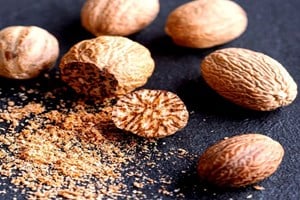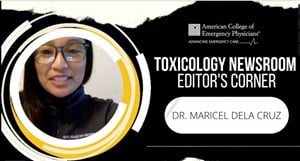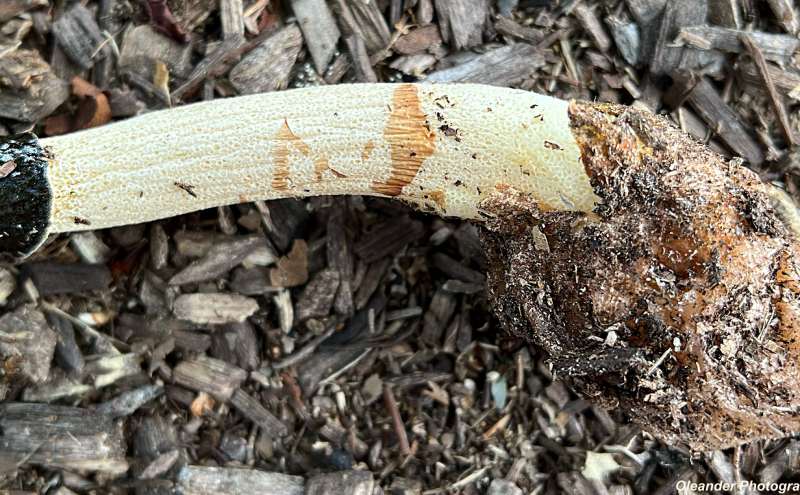
Stinky Horn Mushroom (Phallus Impudicus) "I know it when I smell it"
Jason B. Hack, MD
Professor of Emergency Medicine
Vice-Chair, Departmental Research and Development
Chief, Division of Medical Toxicology
Attending Physician, ECU Health Medical Center
East Carolina University
Brody School of Medicine
Department of Emergency Medicine
600 Moye Blvd, MS 625
Greenville, NC 27858-4353
Introduction
Stinky Horn mushrooms (or stinkhorn mushrooms) are a wide and diffuse family of fungi with many subtypes and amazing appearances that often look otherworldly. While many look like ‘horns,’ some grow a variety of appendages resulting in a squid-like appearance. Others have fantastical mesh attached below their cap resembling a bridal veil billowing out from the mushroom’s hollow stalk. Stinkhorns range in color from white, tan, green, orange, red, with black ends, inclusions, and highlights. This piece will discuss one of these species-- with a much more terrestrial appearance.
Scientifically known as Phallus impudicus (“shameless penis”), these species of stinkhorns are renowned for their distinct anatomy and strong odor. Like all stinkhorns they are saprophytic (feed on dead material), that appear in spring and summer, during cool, wet weather, seeming to spring up out of nowhere often in wood chip, or leaf mulch environments.
Anatomy
The stinkhorn mushroom starts as an egg-shaped bulbous structure with a white smooth surface nestled shallowly within the ground. As it matures, the cap and stipe expand through the egg’s cover (peridium) and elongates from the receptacle rapidly out of the egg (image 1) because within the egg, the mushroom is essentially formed but compacted. When released from the egg, the cells are all in place and the stem rapidly expands into its final shape (image 2). The latticed stalks are usually white, but can be red, or pink. The maturing fungi expands skyward to a height of 6-8 inches very quickly (minutes). The floppy or wrinkled cap on top has a round opening at its peak and is covered with a sticky clear/green or black slimy ‘spore mass or gleba’ (reportedly sweet) containing thousands of spores. Some other species of the stinkhorn (P. duplicatus) have a pendent, latticework veil of tissue called an indusium which hangs down below the cap –absent in the P. impudicus. (Hibby, 2015)
Odor
These mushrooms do not use the breeze to distribute their spores instead they use an animal vector to do the work for them. They do this by attracting insects using sapromyiophilous techniques, attracting insects seeking rotting material or feces (Johnson). The powerful and hard to ignore noxious odor emitted by stinkhorn mushrooms is the hallmark of this species and serves this purpose. As the mushroom matures, it releases a pungent, “rotting-flesh” or “sewage” smell that catches the nose—"You smell them before you see them."
The foul smell of stinkhorn mushrooms is attributed to the presence of a host of volatile compounds withing the slimy exudate or gleba. Borg-Karlson (1994) found the major constituents in the stinkhorn’s odor was a series of dimethyl sulphides containing one to four sulphur atoms with dimethyl trisulphide as the main compound. Other compounds including linalool and trans-ocimene have also been found in the gleba. The odors of the sulphides, enhanced by elevated ambient temperatures, are used to attract flies, slugs and carrion insects (especially of the family Sarcophagaceae), which feed and lay eggs on rotten meat. These insects land on the cap’s smelly slime and then move on, distributing the mushroom’s spores.
Culture
The Phallus impudicus fungus was named by Linnaeus in 1753 as the "immodest phallus," because of its resemblance to male genitals. Some cultures consider the mushrooms to be an aphrodisiac, although this has not been extensively studied. It has been reported that Charles Darwin's daughter would remove them from fields to hide them from maidens’ view. In some cultures, the mushroom is eaten in the egg stage of development with a reported ‘hazelnut’ flavor. (Kibby, 2015)
Toxicity
‘Stinkhorns’ are not considered to be poisonous. No human fatalities have been recorded as resulting from consumption of members of this group. They are considered ‘Noxious’ for their foul odor and reported veterinary experience of dogs ingesting the mushrooms and having gastric irritation symptoms.
In the 7th annual meeting of the American Medical Association in 1854 in a discussion of mushrooms and their toxicity, a description of a patient eating a stinkhorn mushroom (Clathrus cancellatus) was described: “A young person having eaten a bit of it, after six hours suffered from a painful tension of the lower stomach, and violent convulsions. He lost the use of speech, and fell into a state of stupor, which lasted for forty-eight hours. After taking an emetic, he threw up a fragment of the mushroom, with two worms, and mucus tinged with blood. Milk, oil, and emollient fomentations, were then employed with success.” (Porcher)
Treatment
If eaten, no major toxicity is expected, and supportive care would likely be all that is required. It would be important to attempt to identify the mushroom definitively, as it could be confused with the false morel or another toxic mushroom.
Scientific Exploration
Almost 60 biologically active components of P. impudicus have been found including polysaccharides, peptides, phospholipids, glucans, polyphenols, vitamins, unsaturated fatty acids, and chitin. A recent study by Solek (2021) found that extracts of this “fertility” mushroom causes decreases in spermatogenic cells and effects including mushroom induced dysregulation of redox homeostasis from p53/p21- and p16-mediated cell cycle arrest--contributing to fertility reduction. (Solek). Additional work suggests that P. impudicus has antitumor, antioxidant and immune-stimulating properties; a paper by Vyacheslav (2019) found that application of a mushroom derived polysaccharide ointment significantly enhanced healing with regards to their epithelialization, contraction and growth of granulation tissue in a rat model.
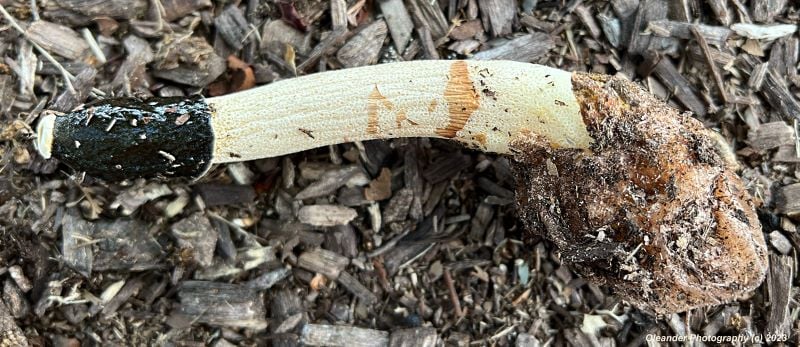
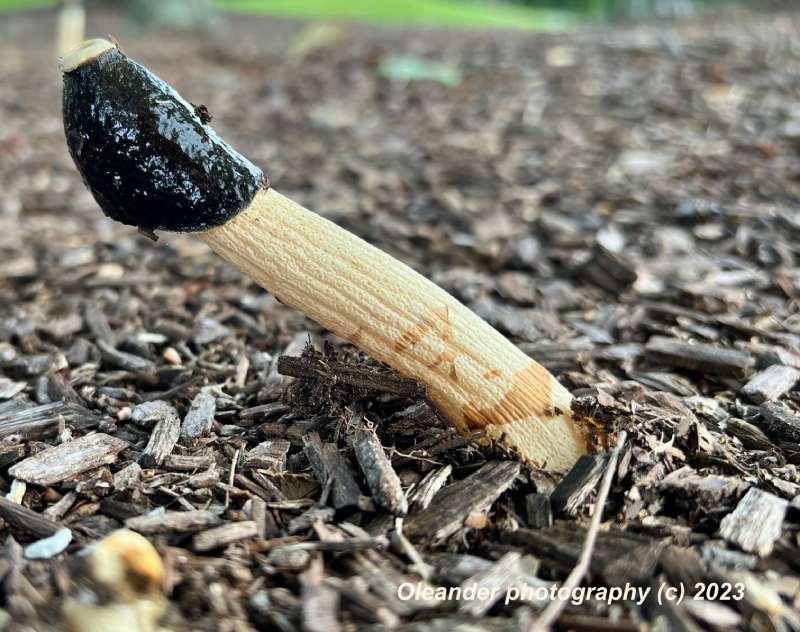
Image Key
Image 1: “Stinky Horn with cup”. Notice the black slime covered cap, the latticed stipe, and the egg releasing the engorged carpophore (which includes the stipe (stem) the gills and the cap)
Image 2: “Stinky Horn 2”. Notice the cap and slime topped with the distal opening and the fly sitting on the slime now covered with spores for distribution.
References
Borg-Karlson, Anna-Karin; Englund, Finn O.; Unelius, C. Rikard (1994). "Dimethyl oligosulphides, major volatiles released from Sauromatum guttatum and Phallus impudicus". Phytochemistry. 35 (2): 321–23.
Johnson SD, Jürgens A. (2010). “Convergent evolution of carrion and faecal scent mimicry in fly-pollinated angiosperm flowers and a stinkhorn fungus”. So African J of Botany;76(4): 796-807
Kibby, G. (2015). "The weird, wonderful and smelly world of stinkhorns and clathroid fungi." Field Mycology 16: 58‒69.
Porcher FP (1854). "On the medicinal and toxicological properties of the cryptogamic plants of the United States". Transactions of the American Medical Association. 7: 280.
Solek P, Shemedyuk N, Shemedyuk A, Dudzinska E, Koziorowski M. Risk of wild fungi treatment failure: Phallus impudicus-induced telomere damage triggers p21/p53 and p16-dependent cell cycle arrest and may contribute to male fertility reduction in vitro. Ecotoxicol Environ Saf. 2021 Feb;209:111782. doi: 10.1016/j.ecoenv.2020.111782. Epub 2020
Vyacheslav, B., Alexey, B., Aliaksandr, A., Valentina, M., Tatyana, P., Aliaksandar, K., et al. (2019). Polysaccharides of mushroom phallus impudicus mycelium: immunomodulating and wound healing properties. Modern Food Sci. Technol. 35 (9), 30–37. doi: 10.13982/j.mfst.1673-9078.2019.9.003


